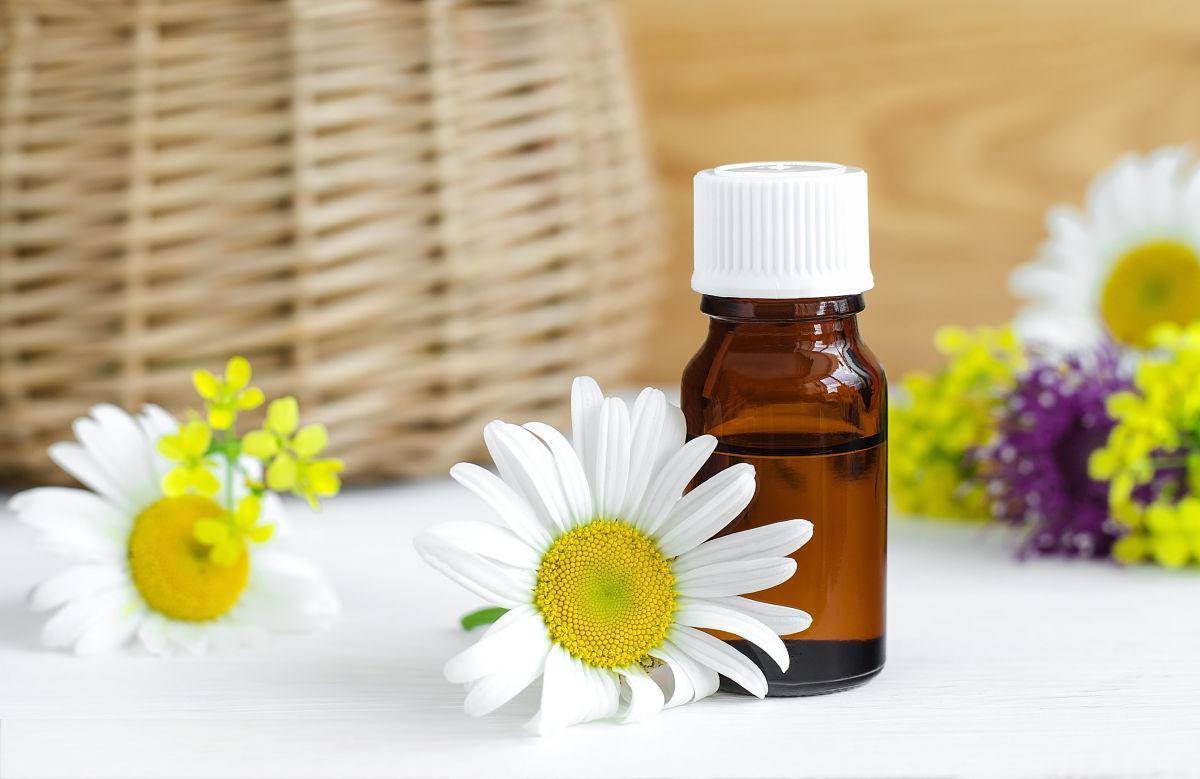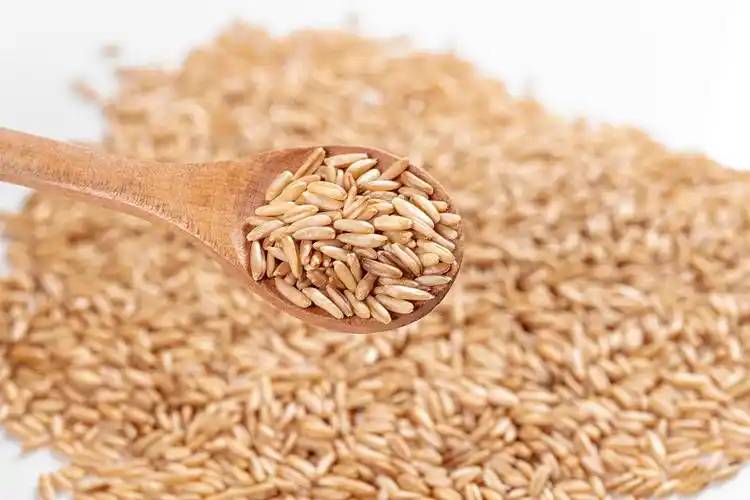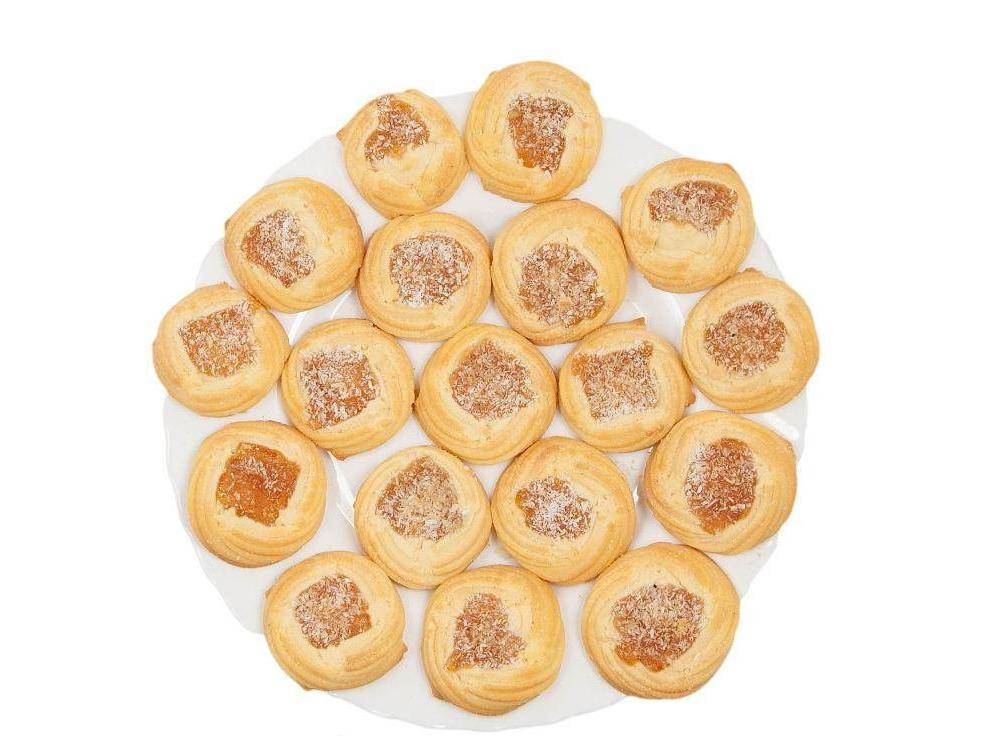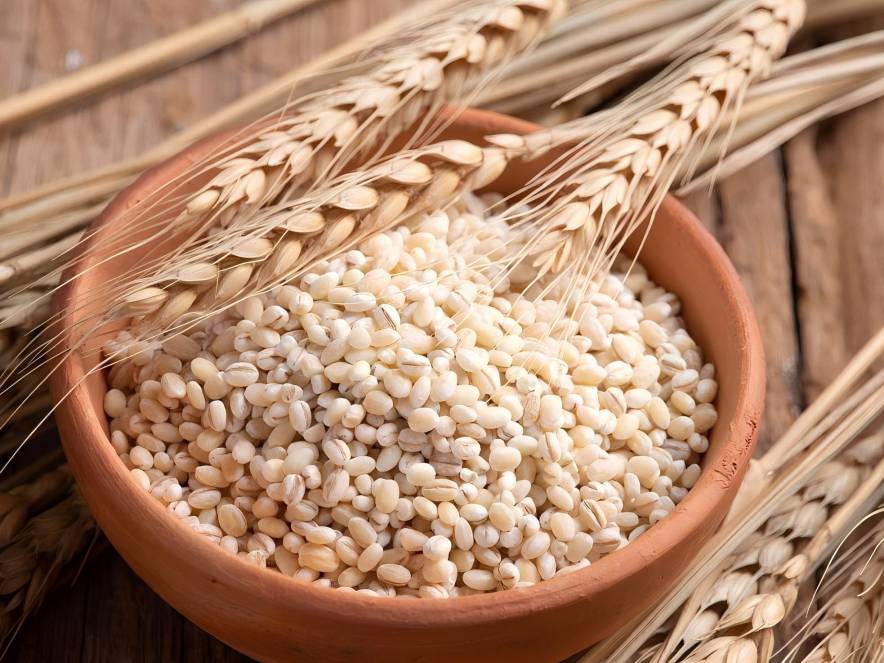What Are the Health Benefits of Loquat Leaf Extract?
1 Overview
Loquat (Eriobotrya japonica (Thunb) Lindl) is an evergreen plant in the Rosaceae family that is native to China. Loquat leaves are the dried leaves of the plant. They are neutral in nature and bitter in taste. They enter the lung and stomach meridians and have been used as medicinal herbs since ancient times. They are a traditional Chinese medicine for relieving coughs and asthma. They have the effects of resolving phlegm and relieving coughs, harmonizing the stomach and reducing rebellious Qi, relieving dysentery and inducing diuresis. They also have a certain effect on neuralgia, arthritis, low back pain and cancer.
Loquat leaves are long and oval, 12 cm to 30 cm long and 3 cm to 9 cm wide. The upper surface is light brownish-green, yellowish-green or reddish-brown and shiny; the lower surface is greyish-green or brownish-yellow, densely covered with greyish-brown hairs. The veins are feathery and oblique on both sides, and the main vein in the middle is brownish-yellow or brownish-red and prominently raised. The leaf tip is acuminate, with sparse serrations around the edge. The petiole is very short, covered with yellowish-brown or brownish-black fluff. The leaves are thick and leathery, with a brittle and fragile texture. It has a fragrant aroma and a slightly bitter taste. The main production areas of loquat leaves in China are Lianxian, Yangshan, Qingyuan and Lianshan Dong Autonomous County in Guangdong, Lingui, Pingle, Gongcheng and Cangwu in Guangxi, Zhenze, Nantong and Zhejiang Xiaoshan and Yongjia; Jiangsu produces the most, commonly known as “Su Piye”; Guangdong produces the best, commonly known as “Guang Piye”; in addition, Fujian, Anhui, Jiangxi, Hubei and other places also produce it. Therefore, China is the world's leading loquat producer, with cultivated area and output accounting for more than 2/3 of the world's total [1].
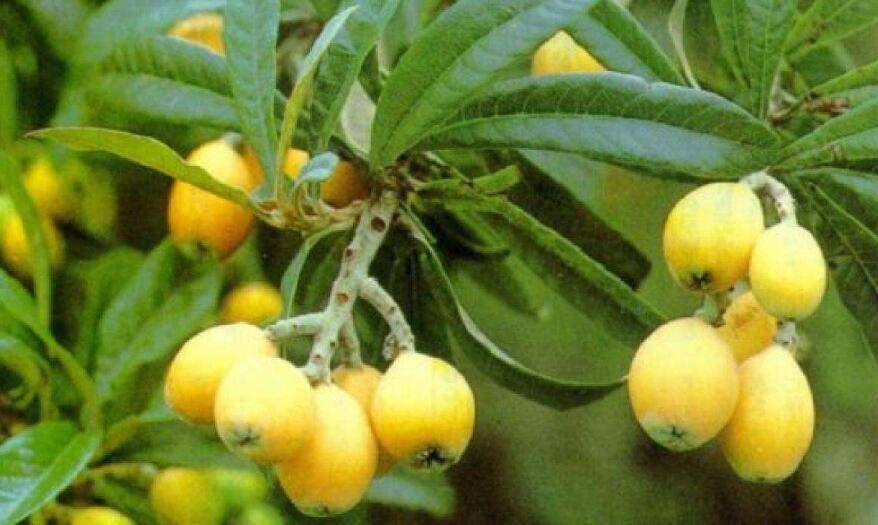
At present, most of the fallen leaves of loquat are generally disposed of as garbage, which not only causes a waste of resources but also pollutes the environment. Therefore, the development and utilization of this resource has good social and economic benefits.
2 Research on the active ingredients of loquat leaf extract
Loquat leaves contain essential oils, the main components of which are nerolidol and farnesol, as well as alcohols such as pinene, camphene, myrcene, p-cymene, linalool and its oxides. Loquat leaves contain more than ten triterpenoid acids, which are the main active ingredients. The main ones are derivatives of ursolic acid, oleanolic acid and tormentic acid. The flavonoid glycosides in loquat leaves are mainly kaempferol and quercetin, and the glycosides consist of 1–3 monosaccharides, most commonly glucose, rhamnose, galactose and arabinose, with the linkages mostly at the 3-position. Acetylated flavonoid glycosides have also been found. Loquat leaves also contain saponins such as loquat glycoside and amygdalin; in addition, they also contain organic acids such as maslinic acid, tartaric acid, citric acid and malic acid; in addition, loquat leaves also contain tannins, vitamins B and C and other chemicals [2]. Only the active ingredients ursolic acid, flavonoids and amygdalin are described in detail here.
2.1 Extraction and content determination of ursolic acid in loquat leaves
Loquat leaves contain a variety of pentacyclic triterpenoids, among which ursolic acid is the main active ingredient with a high content. Modern pharmacological studies have shown that ursolic acid (also known as urs-12-en-3-olic acid) has a variety of biological activities, including anti-hepatitis, anti-tumor, anti-inflammatory and antibacterial, and lowering blood sugar and blood lipids. It is also a very good immune-enhancing drug, and has the effects of enhancing immunity and anti-cancer, anti-promoting cancer, inducing F9 teratoma cell differentiation and anti-angiogenesis, etc., and has low toxicity, so it has important medicinal development value. Ursolic acid in loquat leaves can be prepared using the “alcohol extraction and condensation method”.
Zou Shengqin et al. [3] ground 1,000 g of dried loquat leaves into a coarse powder (20 mesh), extracted twice with 7 times the volume of ethanol with a φ = 90% at 80 °C for 1 h each time. The extract was combined, filtered, and the ethanol was recovered under reduced pressure to obtain an extract. After washing with water and settling, it was treated with the “YCXY-1” impurity remover twice, filtered, dissolved in ethanol, the pH was adjusted, activated carbon was added to decolorize, and then filtered to remove impurities. The pH was adjusted again, and the mixture was separated by condensation, purified and refined. It was then dried at 80 °C for 24 h to to obtain a colorless needle-like crystal of ursolic acid. They also established a method for determining the content of ursolic acid by HPLC. The chromatographic column was a Symmetry Shield RP18, the mobile phase was methanol-water (88:12), the flow rate was 1 mL/min, the detection wavelength was 210 nm, and the column temperature was 250 ℃. Ursolic acid has a good linear relationship in the range of 44 μg to 220 μg (r = 0.9992), with an average recovery of 99.32% (RSD 0.70%). The results show that the HPLC method for determining the content of ursolic acid is accurate and reliable.
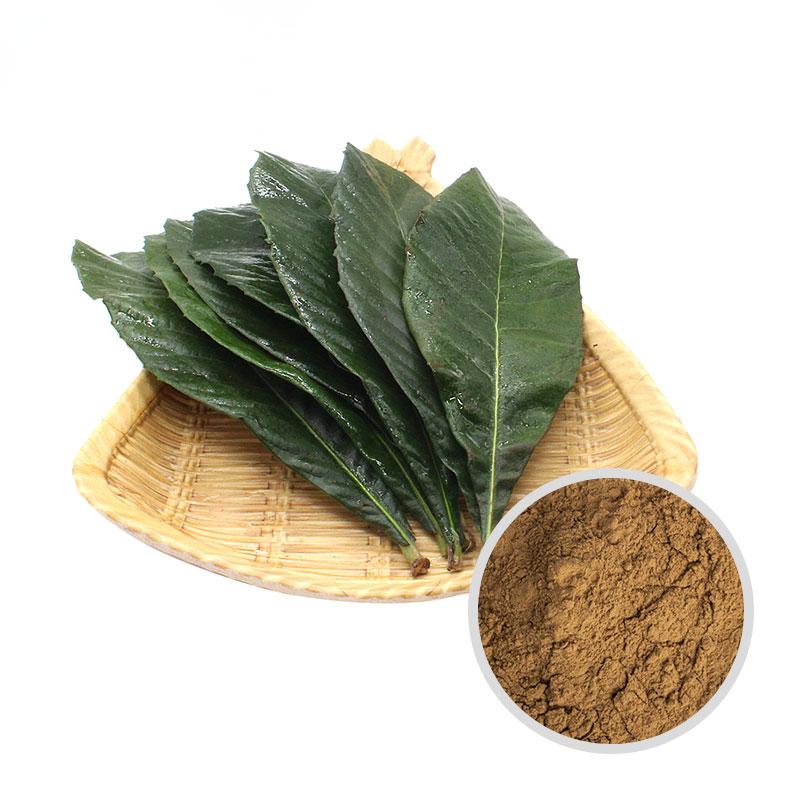
Ju Jianhua et al. [4] also established a method for the determination of ursolic acid content. The method uses a Novapak-C18 (3.9 mm × 150 mm, 4 μm) column, and the mobile phase is acetonitrile: methanol: water: ammonium acetate (60:14:28:0.6), with a flow rate of 1 mL. min-1 and a detection wavelength of 215 nm. Ursolic acid showed good linearity in the range of 4.22 μg to 9.85 μg, with a regression equation of Y = 5.25 × 105x + 1.48 × 105 (r = 0.9996). The average recovery rate was 100.3%, and the RSD was 0.02%. The method is simple, accurate, and reproducible.
2.2 Extraction and study of flavonoids in loquat leaves
Flavonoids have high application value in physiology, medicine and nutrition, and have attracted much attention due to their low toxicity and strong pharmacological activity. Extracting flavonoids from plant leaves has become a popular research topic at home and abroad. Maple leaves, cypress leaves, locust flowers, hawthorn leaves, golden rain tree leaves, lotus leaves, etc. are among the plants used. Extraction processes and methods vary, including mainly water extraction, organic solvent extraction, microwave, ultrasound, enzymatic hydrolysis, adsorption on macroporous resin, supercritical extraction, and combined methods. Among them, the water extraction method is used to extract the flavonoids in loquat leaves. It has the advantages of low process cost and safety, and is suitable for industrial production. The water extract, which contains more nutrients such as inorganic salts, proteins, sugars and amino acids needed by the human body, can replace some of the drinking water and be used directly to make block foods (such as lozenges) or, after appropriate processing (such as concentration, ultrafiltration, etc.), as a nutrient supplement for food industry products such as soft drinks.
Lin Qixun [5] selected fresh loquat leaves (i.e., leaves about to fall) as the test material, and through single-factor experiments and optimization experiments, established and analyzed the multiple regression variable equation of the concentration of flavonoids in loquat leaf water extract as a function of the pH of the water, the temperature of the water extraction, and the time of the water extraction. obtaining the optimal factor level combination of the concentration of flavonoids in the loquat leaf water extract, that is, the pH of the water is 8.0, the water extraction temperature is 100 ℃, and the water extraction time is 105 min. The process of extracting flavonoids from loquat leaves was optimized using the uniform design method. Under the optimized process conditions, a fineness of 1.2 mm × 1.3 mm was used for the raw material, liquid-to-material ratio of 34 g/250 mL, with water of pH 8.0 at an extraction temperature of 100 ℃ and extraction under a lid for 105 min, the concentration of flavonoids in the aqueous extract was 0.979 mg/mL .
Nobuo Kawahara [6] extracted loquat leaves in sequence with dichloromethane, ethyl acetate, and butanol, The ethyl acetate fraction was separated and purified by various chromatographic methods, and flavonoids were also obtained. The structures of three compounds were determined, which were kaempferol-3-O-α-L-(2II,4II-di-E-p-coumaroyl)rhamnoside, kaempferol-3-O-α-L-(2Ⅱ,4Ⅱ-di-Z-p-coumaroyl) rhamnoside, kaempferol-3-O-α-L-(2Ⅱ,4Ⅱ-di-E-feruloyl) rhamnoside.
2.3 Determination of the content of amygdalin in loquat leaves
Amygdalin in loquat leaves, a cyanate glycoside, is absorbed into the body and, under the action of enzymes produced by various microorganisms in the body, can be broken down to release trace amounts of hydrocyanic acid and benzaldehyde. Both of these substances have anti-cancer and analgesic effects. Hydrocyanic acid has a sedative effect on the respiratory centre, producing an antitussive and antiasthmatic effect, and relieving coughs. Benzaldehyde can also be converted into a substance similar to aspirin or benzoic acid, which has a strong analgesic effect.
Zhuang Yongfeng[7] established a method for determining the content of amygdalin in loquat leaves. The method uses a KROMASILCI8 column (250 mm × 4.6 mm, 5 μm) with acetonitrile and water (10:60) as the mobile phase at a flow rate of 0.8 mL. min-1 and a detection wavelength of 240 nm. The results showed that there was a good linear relationship between amygdalin and the concentration of amygdalin in the range of 0.302 μg to 3.02 μg, with a regression equation of Y = 23542.1X-567 (r = 0.9997). The repeatability was good, and the average recovery rate was 100.74%. It can be used for the quality control of loquat leaf medicinal materials.
3. Pharmacological effects of Loquat Leaf
Loquat Leaf is a traditional Chinese medicine commonly used to treat inflammatory respiratory diseases. Loquat leaf is used in combination with other Chinese herbs such as Pinellia ternata and Asarum to treat symptoms such as yellow phlegm and thick phlegm in chronic bronchitis. Qitai Pian, made from loquat leaf, codonopsis, mulberry leaf and Pinellia ternata, is used to relieve coughs, asthma and excessive phlegm in acute and chronic bronchitis. Nowadays, preparations such as loquat leaf paste[8] and loquat leaf syrup have been developed, which are mainly used to treat new and persistent coughs caused by lung heat, sore throat and hoarseness, and blood in sputum. Currently, there are many loquat leaf preparations on the market, including Kang'er Cough Syrup, Chuanbei Bihao Syrup, Qiangli Loquat Syrup, Liangyuan Loquat Leaf Paste, Loquat Cough Granules, and Loquat Cough Syrup.
3.1 Anti-inflammatory and cough suppressant effects
Wang Liwei et al. [9] studied the active ingredients in loquat leaves that have anti-inflammatory and cough suppressant effects, providing a scientific and reliable experimental basis for formulating quality standards for loquat leaves. The method used was the xylene-induced ear swelling method in mice, the sulfur dioxide-induced cough in mice and the citric acid spray-induced cough model in guinea pigs to observe the anti-inflammatory and cough suppressant effects of different isolated parts and monomeric components of loquat leaves. The results showed that loquat glycosides, ursolic acid and total triterpenic acids are the main components of loquat leaves that have anti-inflammatory and cough suppressant effects.
Ju Jianhua et al. [10] also confirmed that ursolic acid, 2α-lighyrophenyl oleanolic acid and total triterpenic acid isolated from loquat leaves showed strong anti-inflammatory activity against xylene-induced ear swelling in mice; ursolic acid and total triterpenic acid also had a significant cough suppressant effect on guinea pigs caused by citric acid spray.
Ge Jinfang [11] used loquat leaf triterpenic acid (50, 150, 450) mg/kg administered by gavage to significantly reduce the increase in total white blood cells and the ratio of neutrophils and alveolar macrophages in the bronchoalveolar lavage fluid (BALF) of rats with chronic bronchitis (CB); it can significantly reduce the degree of infiltration of bronchial mucosal inflammation in CB rats; It can significantly reduce bronchial secretions, significantly reduce the shedding of bronchial mucosal epithelial cells, inhibit the proliferation of bronchial mucosal epithelial cells, and increase the internal diameter of the bronchus and ventilation. It shows that loquat leaf triterpenic acid has a certain ameliorating effect on chronic bronchitis, and its therapeutic effect on CB may be related to its balancing of cytokine production and regulating the immune function of the body.
Xie Qiangmin et al. [12] evaluated the effects of Liangyuan Loquat Syrup on the inhibition of cough reflex and the enhancement of ciliary movement. The antitussive effect of the syrup was observed in guinea pigs and mice using the citric acid cough induction method and the capsaicin cough induction method, and the expectorant effect was observed in mice using the phenol red excretion method and the frog epiglottis ciliary movement method. The results showed that 2.5 g/kg and 7.5 g/kg of loquat extract can significantly reduce the number of coughs caused by citric acid in guinea pigs, and 6.6 g/kg and 13.2 g/kg can significantly reduce the number of coughs caused by capsaicin in mice. Loquat extract at 6.6 g/kg and 13.2 g/kg significantly increased the excretion of phenol red in the airways of mice and increased ciliary movement in the frog's epiglottis, indicating that loquat extract has a good antitussive and expectorant effect.
3.2 Hypoglycemic effect
Dc Tommasi et al. [13] reported that the triterpenoid acids 2α-hydroxyursolic acid, 3β, 6α, 19α-trihydroxyursolic acid has a hypoglycemic effect on diabetic mice and can lower blood glucose levels in normal rabbits. W Noreen et al. [14] reported that the ethanol extract of loquat leaves has a significant but short-term hypoglycemic effect on normal rabbits, while the hypoglycemic effect on alloxan diabetic rabbits is not obvious.
Yasuhide Sakurada [Japan] studied the hypoglycemic effect of loquat leaf extract in combination with sweet potato. Mice were used as experimental animals, and the results showed that loquat leaf extract in combination with sweet potato can shorten the time to produce an effect and enhance the hypoglycemic effect [15].
3.3 Antitumor effect
The Chinese Journal of Traditional Chinese Medicine Information reported that Japanese researchers have discovered that the compounds isolated from loquat leaves contain anticancer substances. According to their report published at the “Symposium on the Development and Application of Natural Medicines” held in Osaka not long ago, they isolated 31 compounds from loquat leaves, including 6 new substances. After determining the chemical structure of these compounds, they conducted experiments on two types of oral cancer cells. The results showed that two of these compounds had the most potent anti-cancer activity, but were not very toxic to normal cells. Cancer experiments on mice also showed that these two compounds had the effect of preventing cancer.
Hideyuki Ito et al. [16] reported that the polyphenols in loquat leaves have an inhibitory cytotoxic effect on human oral tumors. Intraperitoneal injection of ursolic acid extracted from loquat leaves at 10.20 mg/(kg.d) can significantly prolong the survival of tumor-bearing S180 mice, from 13.2 d in the control group to 20.0 d and 28.7 d. Intraperitoneal injection (5, 10, 20) mg/(kg.d) can reduce the tumor weight from 5.52 g in the control group to 3.01, 2.25 and 1.78 g, respectively, The tumor inhibition rates were 45.5%, 59.2% and 67.8% respectively. When the ursolic acid concentration was 5 μmol/L and 10 μmol/L, the number of S180 cells was significantly reduced, which indicates that the reduction in tumor weight was due to the cytotoxic effect of ursolic acid on S180 cells.
3.4 Antiviral and antibacterial effects
Shoko Taniguchi[ 17] and others have shown that 2α, 19α-dihydroxy 3-O -ursolic acid in loquat leaves has anti-HIV activity, and the triterpenoid components extracted from it also show activity against the EBV-EA virus. In addition, the ethyl acetate extract of loquat leaves has an inhibitory effect on Staphylococcus aureus, Staphylococcus aureus, Streptococcus pneumoniae, and Shigella dysenteriae [18].
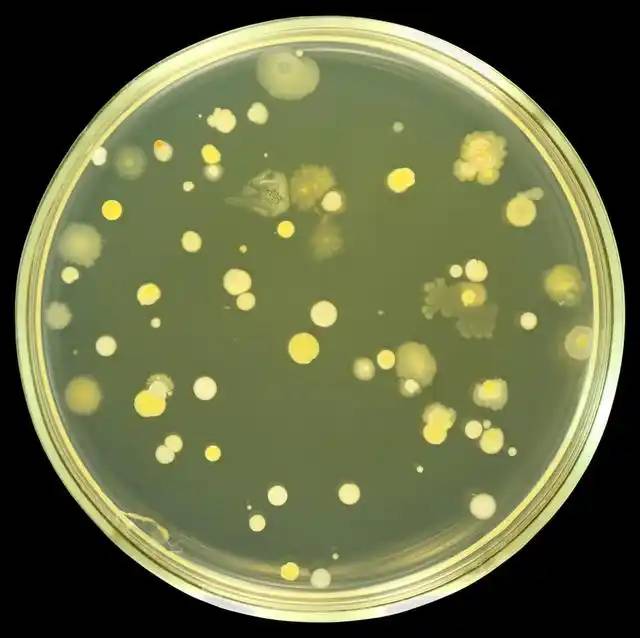
4 Conclusion
Research and development of natural medicines is now a global trend. Loquat leaf raw herbs can be used directly in formulas or made into traditional Chinese medicines such as loquat syrup. They have a wide range of uses and are effective, and their research and application have broad prospects. Given that loquat leaf preparations have the characteristics of being highly effective and low in toxicity in clinical applications, research on their active ingredients, mechanisms of action and pharmacological effects has attracted widespread attention and is worthy of in-depth research by medical and scientific workers.
References:
[1] Chen Yuyi, Zhu Binglin, Lin Yulin. A preliminary study of loquat leaves in Fujian Province [J]. Strait Pharmacy, 2003, 15(3): 42-44.
[2] Liu Chuan'an, Zou Shengqin, Chen Wu. Research progress on the chemical composition, pharmacological action and application of Loquat leaf [J]. Anhui Agricultural Science, 2005, 33(11): 2117-2118, 2171.
[3] Zou Shengqin, Chen Wu, Li Kaiquan, et al. Preparation and HPLC analysis of ursolic acid in loquat leaves [J]. Journal of Jiangxi Agricultural University, 2004, 26(5): 808-810.
[4] Ju Jianhua, Zhou Liang, Zheng Ruixia, et al. Determination of ursolic acid in Loquat leaves by high performance liquid chromatography [J]. Chinese Journal of Pharmacy, 2003, 38(9): 657-659. [5] Lin Qixun. Study on the water extraction process of flavonoids in Loquat leaves [J]. Journal of Agricultural Engineering, 2005, 21( 7) :190 ~ 193.
[ 6] Nobuo Kawahara [Japanese]. Research on the composition of loquat leaves [J]. Foreign Medicine Traditional Chinese Medicine Supplement, 2003, 25( 5) :316.
[7] Zhuang Yongfeng. Determination of amygdalin content in loquat leaves by high performance liquid chromatography [J]. Strait Pharmacy, 2002, 14(5): 64-65.
[8] Hu Yuehong, Jin Ruomin, Gao Jianping. Study on the pharmacological effects of Liangyuan loquat leaf plaster [J]. Journal of Traditional Chinese Medicine, 2001, 29(5):37.
[9] Wang Liwei, Liu Xinmin, Yu Shichun, et al. Study on the anti-inflammatory and antitussive effects of loquat leaves [J]. Chinese Herbal Medicine, 2004, 35(2):174-176.
[10] Ju Jianhua, Zhou Liang, Lin Geng, et al. Study on the triterpenic acid components in Loquat leaves and their anti-inflammatory and antitussive activities [J]. Chinese Journal of Pharmacy, 2003, 38(10): 752-757.
[11] Ge Jinfang. Anti-inflammatory and immunomodulatory effects of triterpenic acids in Loquat leaves and their therapeutic effects and mechanisms in chronic bronchitis [D]. Hefei: Anhui Medical University, 2004.
[12] Xie Qiangmin, Shen Wenhui, Wu Ximei, et al. Effects of Liangyuan Loquat Syrup on cough reflex and ciliary movement [J]. Journal of Zhejiang University (Medical Sciences), 2002, 31(2): 131-134.
[ 13] De Tommasi N , De Simone F, Cirino G , et al.Hypoglycemic efect of ses-quiterpene glycosides and poly hydroxylated triter- penoids of Eriobotrya japonica[ J] .Planta Med, 1991, 57( 4) :414 ~ 416.
[ 14] Noreen W, Wadood A, Hidavat H K , et al.Effect of Eriobotrya japonica on blood glucose levels of normal and alloxan-diabetic rabbits[ J] .Planta Medica, 1988 , 54( 2) :196 ~ 199.
[15] Sakuramata Yasuhide [Japanese]. The hypoglycemic effect of loquat leaf extract in combination with sweet potato [J]. Foreign Medicine Traditional Chinese Medicine Branch, 2005, 27(5): 304.
[16] [ 16] Hideyuki Ito, Eri Kobay shi , Yoshie Takamatsu.Poly phenols from Eriobotrya japonica and their cytotoxicity against human oral tumor cell lines [ J] .C hem Pharm Bull, 2000, 48( 5) :687 ~ 693.
[ 17] Sho koTaniguchi , Yoko Imayoshi , Eri Ko hayshi, et al.Production of bioactive triterpenes by Eriobotrya japonica[ J] .Phyto- chemistry , 2002, 59( 3) :315 ~ 323.
[18] Chinese Pharmacopoeia Commission. Chinese Pharmacopoeia 2000 Edition (Part I) [M]. Beijing: Chemical Industry Press, 2000. 163.


 English
English French
French Spanish
Spanish Russian
Russian Korean
Korean Japanese
Japanese